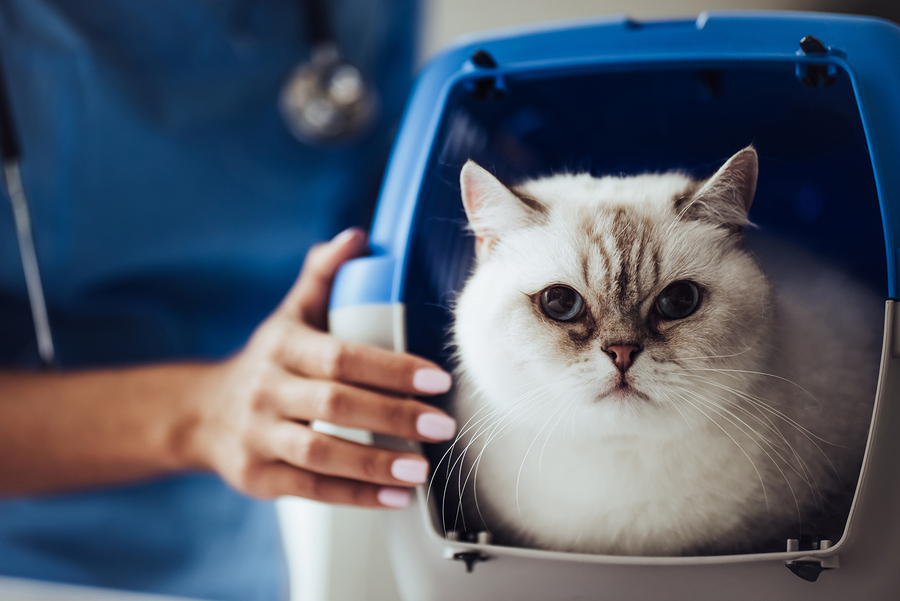Telemedicine has been the greatest COVID silver lining for me. (I mean, other than shaving my head and rediscovering the bidet during the great TP shortage.) Telemedicine has been the greatest professional silver lining, at least. I had been considering dipping my toes into telemedicine for more than two years before the COVID crisis hit. I had researched what platforms to use and how I would incorporate it into my practice. I just needed to figure out how to start. Then, suddenly, we shut the clients out. Remember that? One week I was trying and failing, to stop shaking hands with my clients, and the next we wouldn’t even let them in to use the bathroom. And I was all ready to go with my platform, so I just switched over all of my surgical oncology appointments to telemedicine. Was it seamless? No. Were there glitches? Of course, there were.
But the thing is, if you are improvising and doing your best during a global pandemic, clients don’t really mind. I am not sure that they would have had the same level of patience with me if we didn’t connect perfectly during the before times. A technician asked me how I convinced the clients to do my appointments via telemedicine. “Well,” I replied, “I told them that this is how I do all of my initial consults now, so they can have a telemedicine appointment, or they can have no appointment.” Very convincing argument.
So what is so great about telemedicine? Why was I considering this even before I was forced to? I am in specialty practise, so my cases are referrals, and sometimes my clients are driving more than two hours for their appointments, but even when the clients are close by, I think it is safe to say that all of our clients are busy. (Or, at least they were busy.) Some of them genuinely want a discussion with a veterinarian before they come in so that they can make a plan. It helps them to feel less anxious about what is going to happen. Some people want to pay us for our knowledge and time, not just for “doing veterinary stuff” and that is a gift. For years, I have had clients contact me to request a consult over the phone to help them to decide if they should bring their dog in. They have all offered to pay for my time, but we didn’t really have a mechanism for this, so we just said no.
Here are the different types of clients that I see on a regular basis:
1. The Chatters
These people just want to meet with me to discuss the case so that they feel that they have considered all options. They have no intention of doing surgery. (Even though they are seeing a surgeon.)
2. The Thinkers
These people will likely go forward, but they want to take the information, have a family meeting, then they will schedule, but not next week because they are going on holiday, so maybe the week after that but they aren’t sure. But as soon as they decide, they will want it to happen immediately.
3. The Same Day Peeps
These people want a CT and surgery and they want it now. Yesterday would be better.
4. The Easy Breezy Peeps
These ones are few and far between. They do what you suggest when you suggest it. They are motivated. They have insurance. They are flexible. They are educated. More of this, please.
It is very hard to schedule procedures around The Chatters, the Same Day Peeps and The Thinkers. I have no way of knowing what type of client I am going to meet and what these clients will want, and I haven’t even gotten to their pet’s medical condition or recommendations yet.
Here is where telemedicine comes to the rescue for me. It’s like a sorting hat (okay, that is as far as I can take this Harry Potter reference. HP just wasn’t my jam, but hopefully you know what I mean). For The Chatters, we can have a consult and they can decide not to go further without having to take time off of work, or drive 2 hours each way, or totally stress out their pet. I can schedule exactly the amount of time it takes to have the consult, answer their questions and send a summary. For the people who want everything done yesterday, I can have a discussion with them and make a plan. They can have all of their paperwork done and be ready to rock for when they drop their pet off. It is efficient and they love that because their time is valuable, which is a great point because mine is too, dammit. For the Thinkers, they can think and get back to me when they want to schedule something. Telemedicine makes it so much easier to be efficient and organized.
Do I ever find that the case is different once I bring in the pet and do the physical exam? Usually no, but sometimes yes. That is not a big deal, you just need a little disclaimer saying that once you do a physical examination, the plan might change and you will call them. Plans change all the time. Roll with it. The point is that you are going to do something and you can refine this plan once you see the pet. If you were going to XYZ, but once you examine the pet, you shift to ABC, it is not a big deal. The pet is there and fasted and ready for diagnostics or treatment. Do your thing.
Is talking on the phone just as good as a video conference? No. It’s just not. I don’t know why, but you need to look your clients in the webcam when you are talking to them. There is something about the video conference that makes it feel more like you are meeting them. You are seeing their home, their pet and, sometimes, their tears. You just don’t connect the same way over the phone. They need to see you so that they trust you with their pet. Can you imagine dropping a pet off at a vet clinic and not meeting the veterinarian? Think of how stressful that must be for our clients. We need to do what we can to help the clients to know and trust us. This is a big deal. Counterpoint to this is the telemedicine platform creates the elusive boundary that is so hard for veterinarians to master. For me, it is just the right amount of connection to have a professional relationship with clients.(Fun fact: Dementors can not suck your soul through a telemedicine platform. Also, how am I adding another Harry Potter reference when I don’t like HP at all?)
Will this work in general practise too? Yes. Of course. This technology can add value to your free advice phone calls, help you to evaluate your patients in a new way, and help you and your clients decide which patients really need to be seen and when. It will also allow you to schedule procedures so that you aren’t trying to cram radiographs, aspirates, biopsies, blood draws, bandage changes, ear swabs and vaccines in between your appointments. It may also prevent clients bringing the other dog in the household for you to take a quick look at. It will help them focus on listening to you through your wellness discussions.
What platform should I use? You want a platform that has secure video chat capabilities. Ideally it will have a scheduling feature, the ability to collect payment, the ability for clients to schedule appointments, upload images and the ability to record the consultation.
Do I love working from home one-day a week? Yes, I love it so much! I love having my dog and cat sit with me all day and running downstairs for a quick cup of tea between appointments. I love the quiet and the lack of distractions. I like working with people, but I also love just focussing and getting my work done so I can be done working. Does anyone have a quiet place to sit at work and bang out your paperwork? All of those little chit chats and interruptions add up and can prevent you from concentrating. (Does this sound bad? Maybe. I don’t care.) I love sitting and looking outside the window all day. I love the flexibility. You can love all of this too. Think of the possibilities and how they will fit into your lifestyle.
Over the past few months, I have found that we are all getting better at this. Clients are getting on board with Zoom, Facetime and new platforms. The internet speeds are getting better. It is now rare that my client is not sitting on the meeting platform on time and ready to go when I start the appointment. My clients are also starting to upload images and notes to the platform unsolicited. There are so many advantages to having a focussed consultation with the client that doesn’t involve trying to examine the pet at the same time. If I never have to listen to the inevitable uncomfortable banter and innuendo from a client as I do a rectal examination on their dog in front of them, I will be so grateful.
If you have not embraced telemedicine yet, you are going to have to. Not just because we are not going to be crammed into an exam room with strangers breathing on us any time soon, but because it is the future. Our clients want this and, now that they have tried telemedicine, they are going to demand it. Our clients are getting younger (and/or we are getting older) and younger clients will demand the convenience and that we use technology. I promise, if you give it a try, you will want it too. If you don’t get on it during a global pandemic, then when? How do you start? You just pick a platform and get started. Just do it. Congratulations, now you do telemedicine too!
The views and opinions expressed in this article are those of the author and do not necessarily reflect the position of the DrAndyRoark.com editorial team.


